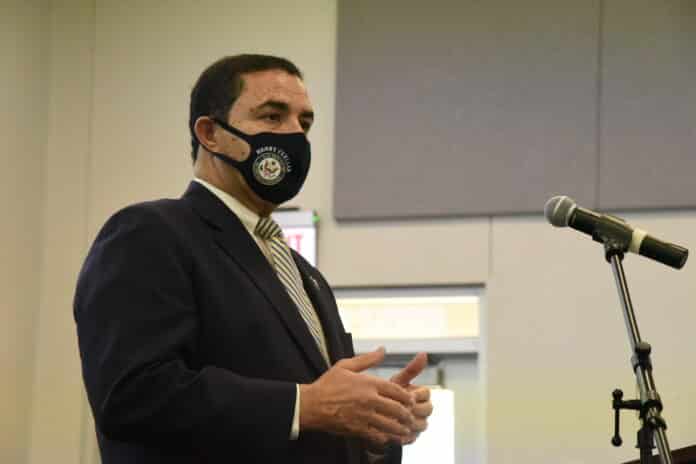Cities, school districts and county governments in Starr and Hidalgo counties will be awarded more than $600 million to help rebuild and continue serving in post-pandemic economies, U.S. Rep. Henry Cuellar announced Tuesday.
Rep. Cuellar held a check presentation at Mission’s Center for Education and Economic Development to highlight the amount communities in his district were set to receive from the American Rescue Plan, which aims to strengthen the economy much like the CARES Act.
Signed in mid-March, the act allocated about $350 billion in emergency funding for state, local, territorial, and tribal governments to remedy a mismatch between rising costs and falling revenues.
Another $130 billion were set aside to help schools nationwide provide education opportunities for children in different types of classroom settings.
Cuellar’s office announced Starr County will be receiving about $19,140,000, and another $78,378,000 will be used for public schools in the county.
Hidalgo County will be receiving $241,740,000, and another $261,891,000 will be used by schools in the county.
The money would help supplement costs associated with the pandemic, like the CARES Act. Though, like the CARES Act, Cuellar noted there may be some delay for smaller cities waiting to receive their money.
“If you’re more than 50,000 and above,” Cuellar said referring to a city’s population, “you get the money directly under a CDBG modified formula.”
“If you’re under 50,000, sorry you still have to work with the state,” Cuellar said. “Once they get the money, they should distribute that money within 30 days of receipt… if whatever reason, there’s some sort of extension, no more than 120 days.”
Funding for local governments is meant to keep frontline public workers employed and reinforce vaccine rollout efforts.
“State and local employment has fallen by around 1.4 million jobs since the pandemic began including layoffs of 1 million educators, compared to around 750,000 job losses during the Great Recession,” a White House news release stated.
Schools receiving the money will be expected to move toward a safe reopening of the majority of schools within the first 100 days of the Biden administration.
Those expenses could include, “repair ventilation systems, reduce class size, implement social distancing, purchase personal protective equipment, and many other things,” Cuellar explained.
Governments will need to file periodic reports to the Treasury Department with detailed accounting of the uses of the public funds.
Guidelines on eligible uses of the funds are still pending from the Treasury Department.




